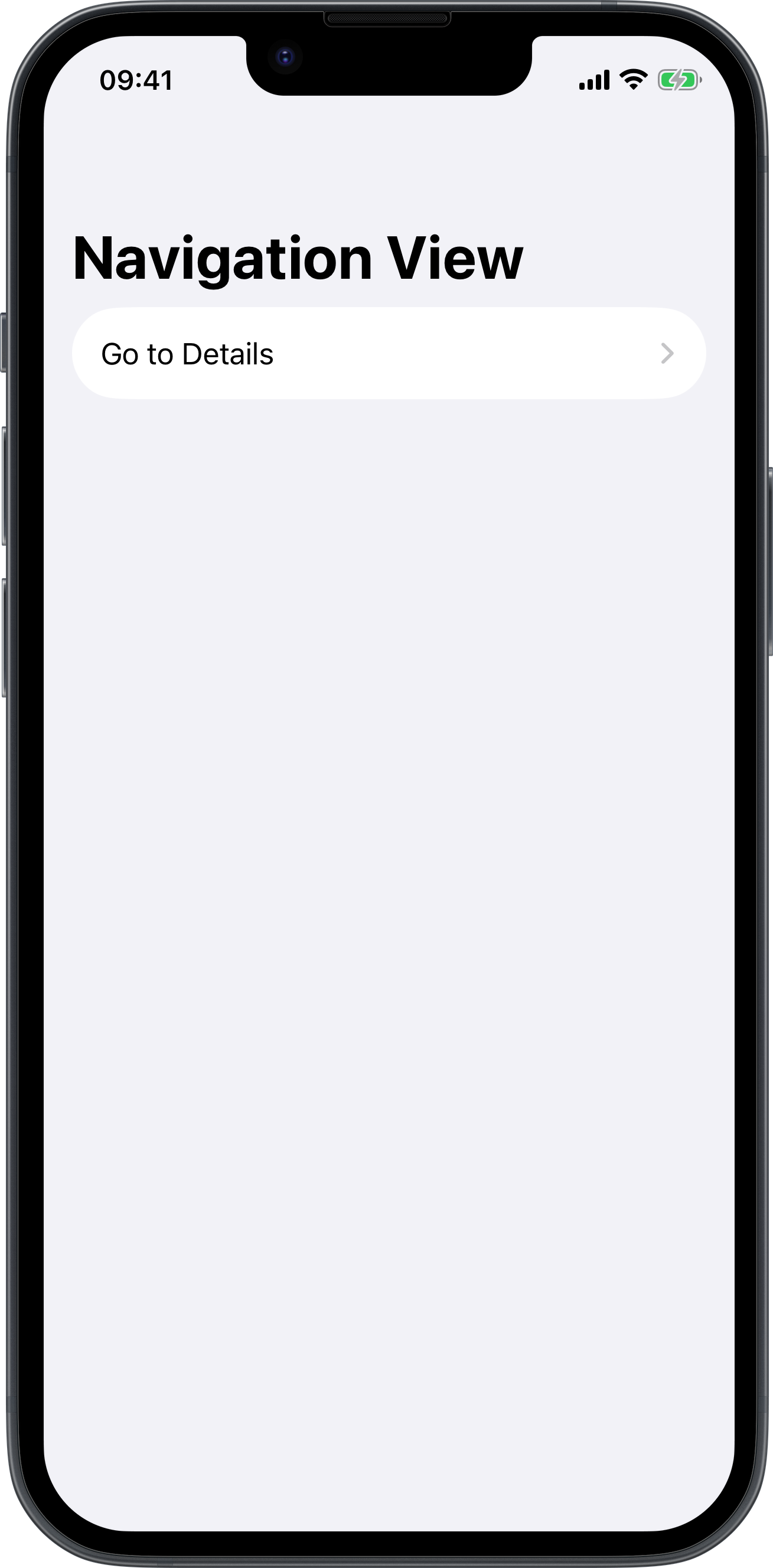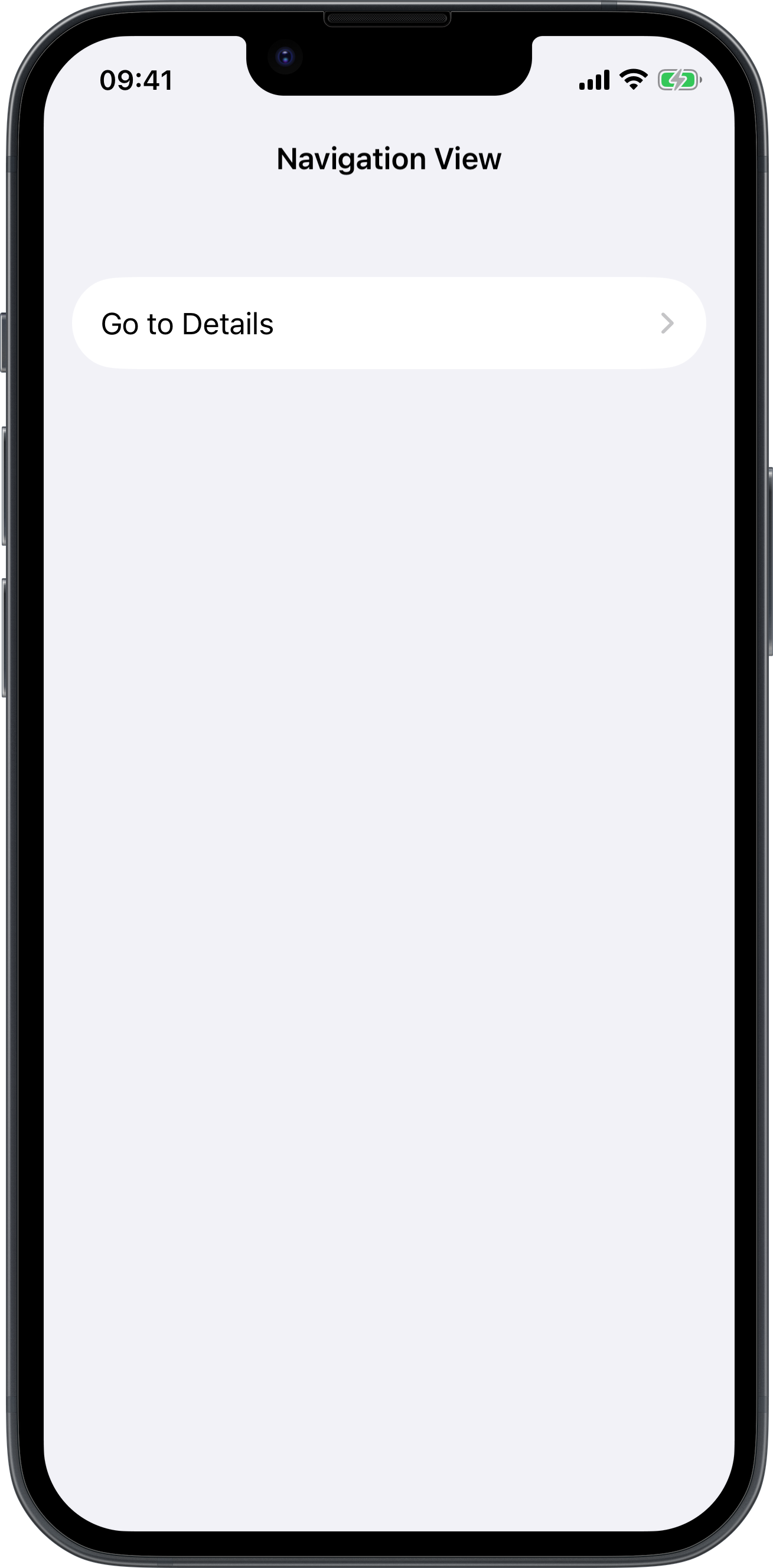shaffex
NavigationView is a container view that provides a navigation interface for hierarchical content. It’s used to manage a stack of views, allowing users to navigate to deeper levels of content and return.
Note: NavigationView is deprecated in iOS 16 and later. For new apps, or apps targeting newer OS versions, it is recommended to use NavigationStack.
Parameters:
navigationTitle: The title to display in the navigation bar.navigationTitleDisplayMode: An attribute that controls how the navigation title is displayed. It can have one of the following values:automatic: The default mode, which typically displays a large title that transitions to an inline title as the user scrolls.large: Always displays a large title.inline: Always displays a smaller, inline title within the navigation bar.
Example:
The example below shows a NavigationView containing a List. The navigationTitle is set to “Navigation View”. A NavigationLink within the list allows the user to navigate to a detail view.
<body>
<navigationview>
<list navigationTitle="Navigation View">
<navigationlink destination="viewDetails">
<text>Go to Details</text>
</navigationlink>
</list>
</navigationview>
<text id="viewDetails">Details</text>
</body>

Inline Title Example:
This example demonstrates the use of navigationTitleDisplayMode="inline" to force the navigation title to always be displayed in the smaller, inline format.
<body>
<navigationview>
<list navigationTitle="Navigation View" navigationTitleDisplayMode="inline">
<navigationlink destination="viewDetails">
<text>Go to Details</text>
</navigationlink>
</list>
</navigationview>
<text id="viewDetails">Details</text>
</body>
